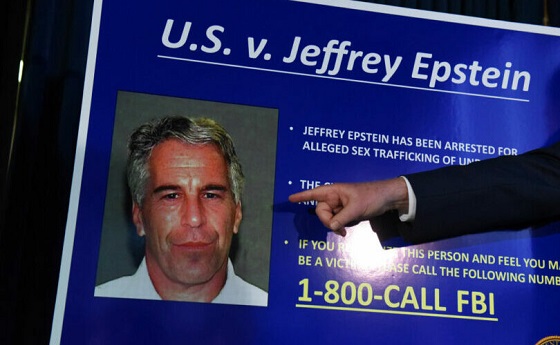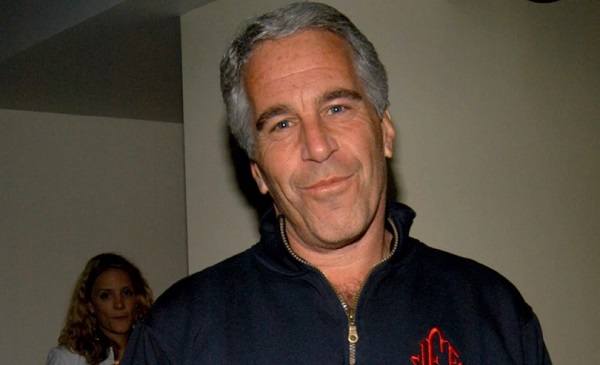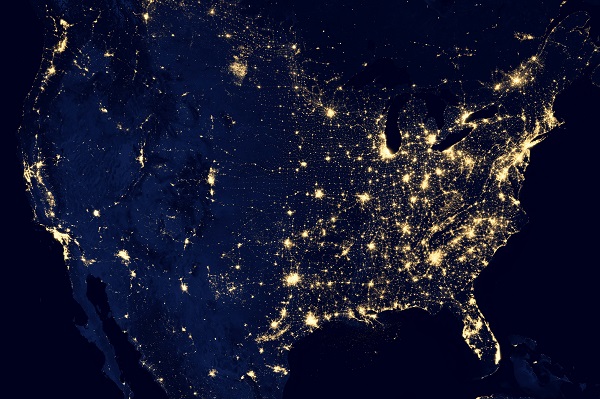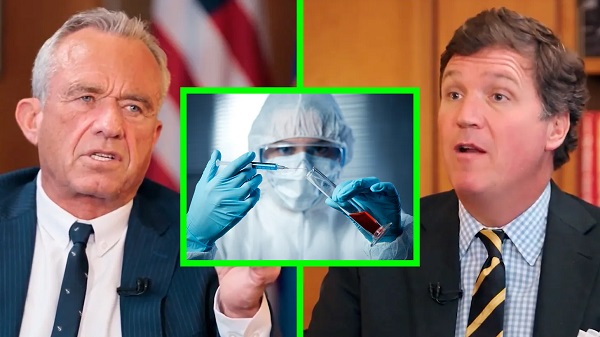Health
Prostate Cancer: Over-Testing and Over-Treatment

From the Brownstone Institute
By
The excessive medical response to the Covid pandemic made one thing abundantly clear: Medical consumers really ought to do their own research into the health issues that impact them. Furthermore, it is no longer enough simply to seek out a “second opinion” or even a “third opinion” from doctors. They may well all be misinformed or biased. Furthermore, this problem appears to predate the Covid phenomenon.
A striking example of that can be found in the recent history of prostate cancer testing and treatment, which, for personal reasons, has become a subject of interest to me. In many ways, it strongly resembles the Covid calamity, where misuse of the PCR test resulted in harming the supposedly Covid-infected with destructive treatments.
Two excellent books on the subject illuminate the issues involved in prostate cancer. One is Invasion of the Prostate Snatchers by Dr. Mark Scholz and Ralph Blum. Dr. Scholtz is executive director of the Prostate Cancer Research Institute in California. The other is The Great Prostate Hoax by Richard Ablin and Ronald Piana. Richard Ablin is a pathologist who invented the PSA test but has become a vociferous critic of its widespread use as a diagnostic tool for prostate cancer.
Mandatory yearly PSA testing at many institutions opened up a gold mine for urologists, who were able to perform lucrative biopsies and prostatectomies on patients who had PSA test numbers above a certain level. However, Ablin has insisted that “routine PSA screening does far more harm to men than good.” Moreover, he maintains that the medical people involved in prostate screening and treatment represent “a self-perpetuating industry that has maimed millions of American men.”
Even during approval hearings for the PSA test, the FDA was well aware of the problems and dangers. For one thing, the test has a 78% false positive rate. An elevated PSA level can be caused by various factors besides cancer, so it is not really a test for prostate cancer. Moreover, a PSA test score can spur frightened men into getting unnecessary biopsies and harmful surgical procedures.
One person who understood the potential dangers of the test well was the chairman of the FDA’s committee, Dr. Harold Markovitz, who decided whether to approve it. He declared, “I’m afraid of this test. If it is approved, it comes out with the imprimatur of the committee…as pointed out, you can’t wash your hands of guilt. . .all this does is threaten a whole lot of men with prostate biopsy…it’s dangerous.”
In the end, the committee did not give unqualified approval to the PSA test but only approved it “with conditions.” However, subsequently, the conditions were ignored.
Nevertheless, the PSA test became celebrated as the route to salvation from prostate cancer. The Postal Service even circulated a stamp promoting yearly PSA tests in 1999. Quite a few people became wealthy and well-known at the Hybritech company, thanks to the Tandem-R PSA test, their most lucrative product.
In those days, the corrupting influence of the pharmaceutical companies on the medical device and drug approval process was already apparent. In an editorial for the Journal of the American Medical Association (quoted in Albin and Piana’s book), Dr. Marcia Angell wrote, “The pharmaceutical industry has gained unprecedented control over the evaluation of its products…there’s mounting evidence that they skew the research they sponsor to make their drugs look better and safer.” She also authored the book The Truth About the Drug Companies: How They Deceive Us and What to Do About It.
A cancer diagnosis often causes great anxiety, but in actuality, prostate cancer develops very slowly compared to other cancers and does not often pose an imminent threat to life. A chart featured in Scholz and Blum’s book compares the average length of life of people whose cancer returns after surgery. In the case of colon cancer, they live on average two more years, but prostate cancer patients live another 18.5 years.
In the overwhelming majority of cases, prostate cancer patients do not die from it but rather from something else, whether they are treated for it or not. In a 2023 article about this issue titled “To Treat or Not to Treat,” the author reports the results of a 15-year study of prostate cancer patients in the New England Journal of Medicine. Only 3% of the men in the study died of prostate cancer, and getting radiation or surgery for it did not seem to offer much statistical benefit over “active surveillance.”
Dr. Scholz confirms this, writing that “studies indicate that these treatments [radiation and surgery] reduce mortality in men with Low and Intermediate-Risk disease by only 1% to 2% and by less than 10% in men with High-Risk disease.”
Nowadays prostate surgery is a dangerous treatment choice, but it is still widely recommended by doctors, especially in Japan. Sadly, it also seems to be unnecessary. One study cited in Ablin and Piana’s book concluded that “PSA mass screening resulted in a huge increase in the number of radical prostatectomies. There is little evidence for improved survival outcomes in the recent years…”
However, a number of urologists urge their patients not to wait to get prostate surgery, threatening them with imminent death if they do not. Ralph Blum, a prostate cancer patient, was told by one urologist, “Without surgery you’ll be dead in two years.” Many will recall that similar death threats were also a common feature of Covid mRNA-injection promotion.
Weighing against prostate surgery are various risks, including death and long-term impairment, since it is a very difficult procedure, even with newer robotic technology. According to Dr. Scholz, about 1 in 600 prostate surgeries result in the death of the patient. Much higher percentages suffer from incontinence (15% to 20%) and impotence after surgery. The psychological impact of these side effects is not a minor problem for many men.
In light of the significant risks and little proven benefit of treatment, Dr. Scholz censures “the urology world’s persistent overtreatment mindset.” Clearly, excessive PSA screening led to inflicting unnecessary suffering on many men. More recently, the Covid phenomenon has been an even more dramatic case of medical overkill.
Ablin and Piana’s book makes an observation that also sheds a harsh light on the Covid medical response: “Isn’t cutting edge innovation that brings new medical technology to the market a good thing for health-care consumers? The answer is yes, but only if new technologies entering the market have proven benefit over the ones they replace.”
That last point especially applies to Japan right now, where people are being urged to receive the next-generation mRNA innovation–the self-amplifying mRNA Covid vaccine. Thankfully, a number seem to be resisting this time.
Addictions
‘Over and over until they die’: Drug crisis pushes first responders to the brink

First responders say it is not overdoses that leave them feeling burned out—it is the endless cycle of calls they cannot meaningfully resolve
The soap bottle just missed his head.
Standing in the doorway of a cluttered Halifax apartment, Derek, a primary care paramedic, watched it smash against the wall.
Derek was there because the woman who threw it had called 911 again — she did so nearly every day. She said she had chest pain. But when she saw the green patch on his uniform, she erupted. Green meant he could not give her what she wanted: fentanyl.
She screamed at him to call “the red tags” — advanced care paramedics authorized to administer opioids. With none available, Derek declared the scene unsafe and left. Later that night, she called again. This time, a red-patched unit was available. She got her dose.
Derek says he was not angry at the woman, but at the system that left her trapped in addiction — and him powerless to help.
First responders across Canada say it is not overdoses that leave them feeling burned out — it is the endless cycle of calls they cannot meaningfully resolve. Understaffed, overburdened and dispatched into crises they are not equipped to fix, many feel morally and emotionally drained.
“We’re sending our first responders to try and manage what should otherwise be dealt with at structural and systemic levels,” said Nicholas Carleton, a University of Regina researcher who studies the mental health of public safety personnel.
Canadian Affairs agreed to use pseudonyms for the two frontline workers referenced in this story. Canadian Affairs also spoke with nine other first responders who agreed to speak only on background. All of these sources cited concerns about workplace retaliation for speaking out.
Moral injury
Canada’s opioid crisis is pushing frontline workers such as paramedics to the brink.
A 2024 study of 350 Quebec paramedics shows one in three have seriously considered suicide. Globally, ambulance workers have among the highest suicide rates of public service personnel.
Between 2017 and 2024, Canadian paramedics responded to nearly 240,000 suspected opioid overdoses. More than 50,000 of those were fatal.
Yet many paramedics say overdose calls are not the hardest part of the job.
“When they do come up, they’re pretty easy calls,” said Derek. Naloxone, a drug that reverses overdoses, is readily available. “I can actually fix the problem,” he said. “[It’s a] bit of instant gratification, honestly.”
What drains him are the calls they cannot fix: mental health crises, child neglect and abuse, homelessness.
“The ER has a [cardiac catheterization] lab that can do surgery in minutes to fix a heart attack. But there’s nowhere I can bring the mental health patients.
“So they call. And they call. And they call.”
Thomas, a primary care paramedic in Eastern Ontario, echoes that frustration.
“The ER isn’t a good place to treat addiction,” he said. “They need intensive, long-term psychological inpatient treatment and a healthy environment and support system — first responders cannot offer that.”
That powerlessness erodes trust. Paramedics say patients with addictions often become aggressive, or stop seeking help altogether.
“We have a terrible relationship with the people in our community struggling with addiction,” Thomas said. “They know they will sit in an ER bed for a few hours while being in withdrawals and then be discharged with a waitlist or no follow-up.”
Carleton, of the University of Regina, says that reviving people repeatedly without improvement decreases morale.
“You’re resuscitating someone time and time again,” said Carleton, who is also director of the Psychological Trauma and Stress Systems Lab, a federal unit dedicated to mental health research for public safety personnel. “That can lead to compassion fatigue … and moral injury.”
Katy Kamkar, a clinical psychologist focused on first responder mental health, says moral injury arises when workers are trapped in ethically impossible situations — saving a life while knowing that person will be back in the same state tomorrow.
“Burnout is … emotional exhaustion, depersonalization, and reduced personal accomplishment,” she said in an emailed statement. “High call volumes, lack of support or follow-up care for patients, and/or bureaucratic constraints … can increase the risk of reduced empathy, absenteeism and increased turnover.”
Kamkar says moral injury affects all branches of public safety, not just paramedics. Firefighters, who are often the first to arrive on the scene, face trauma from overdose deaths. Police report distress enforcing laws that criminalize suffering.
Understaffed and overburdened
Staffing shortages are another major stressor.
“First responders were amazing during the pandemic, but it also caused a lot of fatigue, and a lot of people left our business because of stress and violence,” said Marc-André Périard, vice president of the Paramedic Chiefs of Canada.
Nearly half of emergency medical services workers experience daily “Code Blacks,” where there are no ambulances available. Vacancy rates are climbing across emergency services. The federal government predicts paramedic shortages will persist over the coming decade, alongside moderate shortages of police and firefighters.
Unsafe work conditions are another concern. Responders enter chaotic scenes where bystanders — often fellow drug users — mistake them for police. Paramedics can face hostility from patients they just saved, says Périard.
“People are upset that they’ve been taken out of their high [when Naloxone is administered] and not realizing how close to dying they were,” he said.
Thomas says safety is undermined by vague, inconsistently enforced policies. And efforts to collect meaningful data can be hampered by a work culture that punishes reporting workplace dangers.
“If you report violence, it can come back to haunt you in performance reviews” he said.
Some hesitate to wait for police before entering volatile scenes, fearing delayed response times.
“[What] would help mitigate violence is to have management support their staff directly in … waiting for police before arriving at the scene, support paramedics in leaving an unsafe scene … and for police and the Crown to pursue cases of violence against health-care workers,” Thomas said.
“Right now, the onus is on us … [but once you enter], leaving a scene is considered patient abandonment,” he said.
Upstream solutions
Carleton says paramedics’ ability to refer patients to addiction and mental health referral networks varies widely based on their location. These networks rely on inconsistent local staffing, creating a patchwork system where people easily fall through the cracks.
“[Any] referral system butts up really quickly against the challenges our health-care system is facing,” he said. “Those infrastructures simply don’t exist at the size and scale that we need.”
Périard agrees. “There’s a lot of investment in safe injection sites, but not as much [resources] put into help[ing] these people deal with their addictions,” he said.
Until that changes, the cycle will continue.
On May 8, Alberta renewed a $1.5 million grant to support first responders’ mental health. Carleton welcomes the funding, but says it risks being futile without also addressing understaffing, excessive workloads and unsafe conditions.
“I applaud Alberta’s investment. But there need to be guardrails and protections in place, because some programs should be quickly dismissed as ineffective — but they aren’t always,” he said.
Carleton’s research found that fewer than 10 mental health programs marketed to Canadian governments — out of 300 in total — are backed up by evidence showing their effectiveness.
In his view, the answer is not complicated — but enormous.
“We’ve got to get way further upstream,” he said.
“We’re rapidly approaching more and more crisis-level challenges… with fewer and fewer [first responders], and we’re asking them to do more and more.”
This article was produced through the Breaking Needles Fellowship Program, which provided a grant to Canadian Affairs, a digital media outlet, to fund journalism exploring addiction and crime in Canada. Articles produced through the Fellowship are co-published by Break The Needle and Canadian Affairs.
Business
Prime minister can make good on campaign promise by reforming Canada Health Act

From the Fraser Institute
While running for the job of leading the country, Prime Minister Carney promised to defend the Canada Health Act (CHA) and build a health-care system Canadians can be proud of. Unfortunately, to have any hope of accomplishing the latter promise, he must break the former and reform the CHA.
As long as Ottawa upholds and maintains the CHA in its current form, Canadians will not have a timely, accessible and high-quality universal health-care system they can be proud of.
Consider for a moment the remarkably poor state of health care in Canada today. According to international comparisons of universal health-care systems, Canadians endure some of the lowest access to physicians, medical technologies and hospital beds in the developed world, and wait in queues for health care that routinely rank among the longest in the developed world. This is all happening despite Canadians paying for one of the developed world’s most expensive universal-access health-care systems.
None of this is new. Canada’s poor ranking in the availability of services—despite high spending—reaches back at least two decades. And wait times for health care have nearly tripled since the early 1990s. Back then, in 1993, Canadians could expect to wait 9.3 weeks for medical treatment after GP referral compared to 30 weeks in 2024.
But fortunately, we can find the solutions to our health-care woes in other countries such as Germany, Switzerland, the Netherlands and Australia, which all provide more timely access to quality universal care. Every one of these countries requires patient cost-sharing for physician and hospital services, and allows private competition in the delivery of universally accessible services with money following patients to hospitals and surgical clinics. And all these countries allow private purchases of health care, as this reduces the burden on the publicly-funded system and creates a valuable pressure valve for it.
And this brings us back to the CHA, which contains the federal government’s requirements for provincial policymaking. To receive their full federal cash transfers for health care from Ottawa (totalling nearly $55 billion in 2025/26) provinces must abide by CHA rules and regulations.
And therein lies the rub—the CHA expressly disallows requiring patients to share the cost of treatment while the CHA’s often vaguely defined terms and conditions have been used by federal governments to discourage a larger role for the private sector in the delivery of health-care services.
Clearly, it’s time for Ottawa’s approach to reflect a more contemporary understanding of how to structure a truly world-class universal health-care system.
Prime Minister Carney can begin by learning from the federal government’s own welfare reforms in the 1990s, which reduced federal transfers and allowed provinces more flexibility with policymaking. The resulting period of provincial policy innovation reduced welfare dependency and government spending on social assistance (i.e. savings for taxpayers). When Ottawa stepped back and allowed the provinces to vary policy to their unique circumstances, Canadians got improved outcomes for fewer dollars.
We need that same approach for health care today, and it begins with the federal government reforming the CHA to expressly allow provinces the ability to explore alternate policy approaches, while maintaining the foundational principles of universality.
Next, the Carney government should either hold cash transfers for health care constant (in nominal terms), reduce them or eliminate them entirely with a concordant reduction in federal taxes. By reducing (or eliminating) the pool of cash tied to the strings of the CHA, provinces would have greater freedom to pursue reform policies they consider to be in the best interests of their residents without federal intervention.
After more than four decades of effectively mandating failing health policy, it’s high time to remove ambiguity and minimize uncertainty—and the potential for politically motivated interpretations—in the CHA. If Prime Minister Carney wants Canadians to finally have a world-class health-care system then can be proud of, he should allow the provinces to choose their own set of universal health-care policies. The first step is to fix, rather than defend, the 40-year-old legislation holding the provinces back.
-

 Fraser Institute1 day ago
Fraser Institute1 day agoBefore Trudeau average annual immigration was 617,800. Under Trudeau number skyrocketted to 1.4 million annually
-

 Crime2 days ago
Crime2 days ago“This is a total fucking disaster”
-

 International2 days ago
International2 days agoChicago suburb purchases childhood home of Pope Leo XIV
-

 Daily Caller2 days ago
Daily Caller2 days ago‘I Know How These People Operate’: Fmr CIA Officer Calls BS On FBI’s New Epstein Intel
-

 MAiD2 days ago
MAiD2 days agoCanada’s euthanasia regime is already killing the disabled. It’s about to get worse
-

 Daily Caller2 days ago
Daily Caller2 days agoBlackouts Coming If America Continues With Biden-Era Green Frenzy, Trump Admin Warns
-

 Red Deer1 day ago
Red Deer1 day agoJoin SPARC in spreading kindness by July 14th
-

 Business1 day ago
Business1 day agoPrime minister can make good on campaign promise by reforming Canada Health Act






